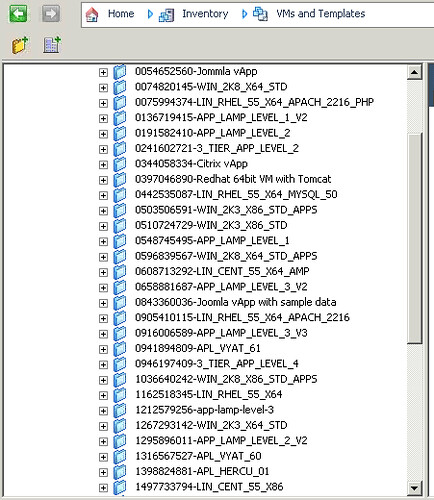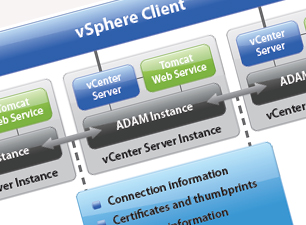The release of vCenter 5.1 added more certificates into the mix (I shudder every time I think about Certificates). This was done to make communication between the components more secure. However, the process of updating these certificates with customers' own signed certificates is currently very tedious, error prone and the source of much pain for many Admins around the world.
Well I have good news for you all……
Read the rest of this entry »

Trying to admin your vCloud using the vSphere Client might become a little confusing.
 After reading through the ESX 4.0 and vCenter 4.0 Server Installation Guide I noticed the following requirement for adding vCenter to a Linked Mode group;
After reading through the ESX 4.0 and vCenter 4.0 Server Installation Guide I noticed the following requirement for adding vCenter to a Linked Mode group;
“All vCenter Server instances must have network time synchronization. The vCenter Server installer
validates that the machine clocks are not more than 5 minutes apart.”
Now this got me thinking…..
If a company had two Data Centers, lets say one in London and one in Amsterdam, They’ve decided they wanted to use vCenter Linked Mode to help them manage both Data Centers from a central location. According to VMware’s documentation this wouldn’t be possible due to the time difference between the two cities, London GMT and Amsterdam GMT+1 would mean that the vCenter Server clocks would be 1 hour apart.
Read the rest of this entry »
I really could have done with this information when i had An error occurred during configuration of the HA Agent on the host rather than having to trawl through loads of discussions on the VMware Communities.
There are now two really useful documents which can be found at the VIOPS website, one is called ESX 3 Server Log Map and the other is VirtualCentre 2 Logs. These documents contain all the information you need to know about VMware ESX 3.* and vCenter 2.* log files and their locations.
Read the rest of this entry »

 After reading through the
After reading through the 